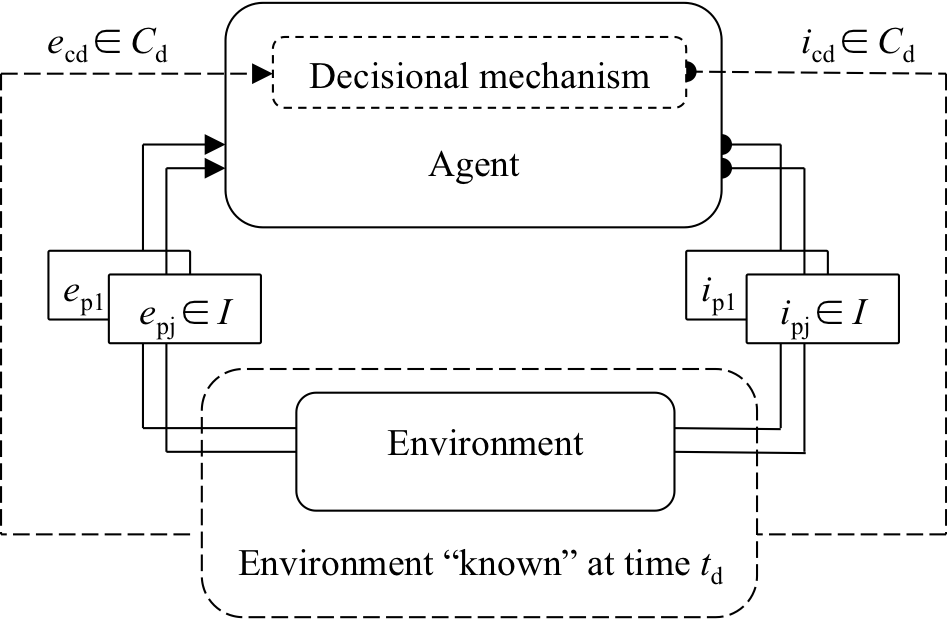
Lessons:
3. Constructivist epistemology

Home » 5. Radical interactionism » 52. Recursive learning
Radical interactionism models the policy coupling (i.e., the agent/environment coupling) in the same way as the cognitive coupling (i.e., the proactive/reactive coupling presented on Page 43): by using intended interactions and enacted interactions. This unification of the model helps better understand recursive self-programming. Figure 52 illustrates this recursivity.

Figure 52: Recursive learning in radical interactionism.
At the beginning of decision cycle td (dashed loop in Figure 52), the agent's decisional mechanism chooses the intended composite interaction icd from amongst the set Cd of composite interactions known at time td. The enaction of icd consists of trying to enact the k primitive interactions ip1 ... ipk that constitute icd one after another (solid loops). If the enaction of ipj fails (epj ≠ ipj) then the enaction of icd is interrupted. The decisional mechanism then receives the actually enacted composite interaction ecd corresponding to the sequence ⟨ep1, . . . , epj⟩, j ≤ k. From the perspective of the decisional mechanism, ecd thus seems to be enacted as a single interaction in a virtual "environment known by the agent at time td" (dashed-line box). Because the primitive loop (plain line) and the decisional loop (dashed line) use the same entities (interactions), the learning mechanism that applies to the primitive loop can apply in the same way to the decisional loop, which allows recursive learning of increasingly complex composite interactions.
Because each instance of agent learns different composite interactions depending on its individual experience, the cognitive part of each agent (the "decisional mechanism" in Figure 52) develops its own individual vision of the world (the environment known at time td). As a result, over time, each instance of agent interprets the world in its own way and makes individual decisions, which leads to individual sense-making and free will. This has been specifically argued by a branch of cognitive science called theory of enaction (e.g., references in Page 47).
See public discussions about this page or start a new discussion by clicking on the Google+ Share button. Please type the #IDEALMOOC052 hashtag in your post: